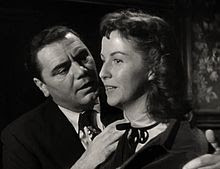Marty
TCM viewing
I don’t think it matters who you are or where you’re from; on some level, everybody can relate to Marty: coming up short in certain people’s eyes, feeling pressured to be something you’re not, fearing your luck will never change. If you wanna talk romance, I have a friend in his sixties who got married a few years ago. Sweetest guy you’d ever wanna meet: witty, smart, extremely talented.
When I learned, secondhand, that he was lonely, I wished I could hook him up with someone, but he doesn’t live in the New York area. Several years ago, he began posting pictures of himself and his new girlfriend on Facebook, and I was pleasantly surprised. When they got married, I was thrilled for him, in part because if he could find love at his age, there was hope for me, right? And then I met Virginia and here we are.
Writer Paddy Chayefsky was careful not to overload his screenplay with sentiment. Marty’s a good guy, but he’s rough around the edges. He would be the first to admit he’s not used to being with a girl,. After he meets Clara, he’s still susceptible to the influence of his peers, who just wanna run around and not settle down. The subplot involving his mother, fearing she’ll be left all alone if Marty were to marry, doesn’t really get resolved, and I would’ve liked to have seen Marty and Clara together one last time at the end, but otherwise, this movie still holds up, with a superlative performance from Ernest Borgnine.
I wanna talk about Marty’s neighborhood. The Boogie Down Bronx was, needless to say, very different in 1955, and Chayefsky, a Bronx native, sprinkles lots of local references throughout the screenplay. I know little about the one borough that’s part of the mainland, so I thought I’d highlight a few of those references, since they speak to a bygone New York.
Two local movie theaters get mentioned. The RKO Chester was on Boston Road, near East Tremont Avenue, several blocks from the zoo. It was open from 1927-68 and the building was destroyed in 2010. Here are shots of it from inside and outside. The RKO chain was the outgrowth of the merger of Radio Pictures and the Keith-Albee-Orpheum Theater Chain in 1928, which formed the studio RKO Pictures. In the movie, Borgnine and Betsy Blair walk under the marquee of the Chester, which shows the Audie Murphy Western Ride Clear of Diablo.
There’s also a mention of the Loews Paradise, which was on Grand Concourse between 187th and 188th Streets. It played movies from 1929-94 and was one of the “Wonder Theaters” built on the outskirts of midtown Manhattan, the outer boroughs and New Jersey. The Loews Jersey City is one of those, and like that one, the Paradise had a Wonder Organ, which I talked about here. Check out this video of a tour through the Paradise. After a renovation period, it reopened as a live theater in 2005.
Marty went to Theodore Roosevelt High School. Active from 1918-2006, it was located on East Fordham Road, between Fordham University and the Belmont neighborhood. The building is now an educational campus that houses several public schools. The opening scene of the movie was shot on Arthur Avenue, so Marty probably lives in Belmont.
When Marty attended, he might have gone to the Chester to see Roosevelt alumnus June Allyson in the movies. Allyson, who attended during the Depression as Eleanor Geisman, left school during her junior year to get work dancing and modeling. Other Roosevelt students include Kiss guitarist Ace Frehley and Chazz Palminteri, who turned his Bronx childhood memories into the play, film and musical A Bronx Tale.
Southern Boulevard is mentioned as the nice part of town. Indeed, the Botanical Garden is on Southern, and I went there with Sandi only a couple of weeks ago. It’s one of her favorite spots in all of New York; she goes there every year during the spring. The day we went was during spring break throughout the city, so it was particularly busy. We had a hard time finding parking. The variety of foliage was spectacular, and she took dozens of pictures.
Marty was produced by Burt Lancaster and his business partner and agent Harold Hecht, under the name Hecht-Lancaster. It was a triumph for the little guys, if you can think of a major star like Lancaster as such: the film grossed over five million bucks on an estimated budget of $350,000 and won Best Picture despite not coming from a major studio (though HL distributed through United Artists). Here’s more on the production history of the film.
I watched Marty on TCM, where the guest programmer was Ava DuVernay, which was a pleasant surprise. I wasn’t aware she was such a fan of classic film, but she talked about her love of this film in particular, and mentioned how the original trailer featured producer Lancaster in a clever bit of misdirection.







Love the physical/historical connections to this classic.
ReplyDeleteUnder other hands Marty could have been maudlin, but Chayefsky had a touch for realism and thoughtfulness that I admire.
Yeah, I’ll have to write more about him in the future.
ReplyDeleteThanks for including all the references to Marty's neighbourhood. This film has always seemed to have a lot of New York flavour, so I was glad to read about the actual theatres, high school, etc. Thanks for including links, too.
ReplyDeleteThis is one of my all-time fave films. Like you said, it never collapses into sentimentality, but it is heartbreaking all the same.
I don’t often make it up there because it feels so out of the way (at least two trains or two very long bus rides), so learning all this stuff about the Bronx was as much for me as for the blog. Glad you liked it.
ReplyDelete